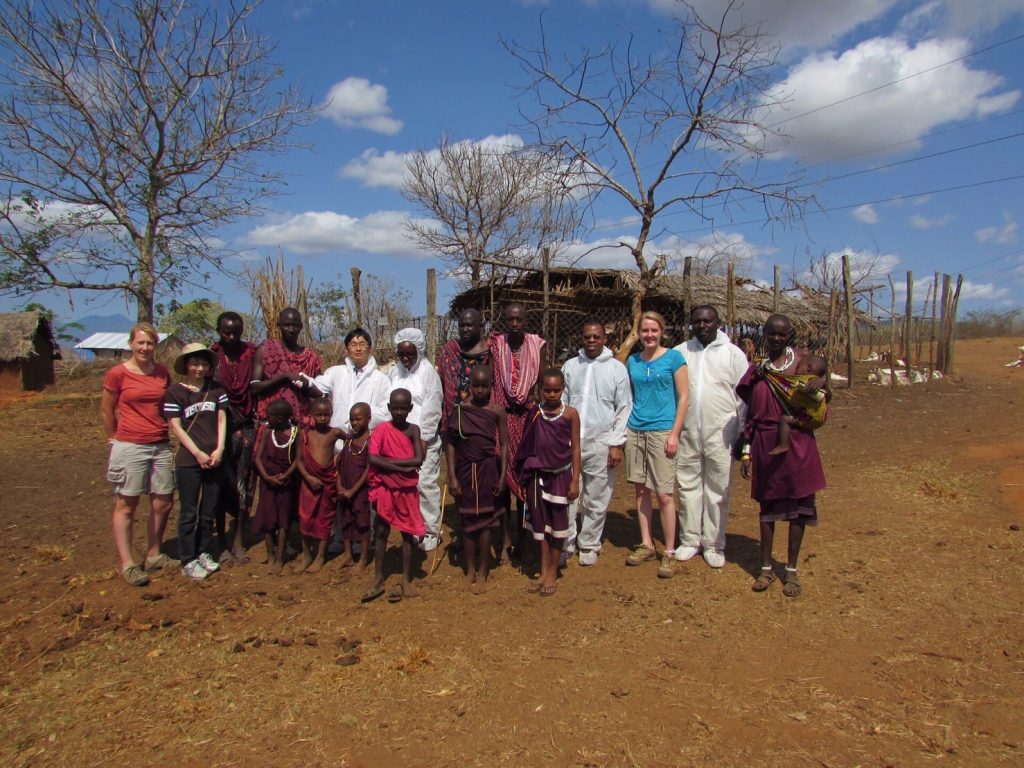
D.V.M., Ph.D. Professor Wataru Yamazaki
There are various pathogenic microorganisms in the environment. Infectious diseases are caused by various pathogenic microorganisms in the environment, including animals. Also, the epidemic of infectious diseases has various effects and changes in our society. There are many unclear points about how these pathogens emerged in the environment including the body of animals and their ecology in the environment. We use ecological approaches to analyze how various factors related to individual pathogenic microorganisms and the infectious diseases they cause.
Research and Education
Microorganisms possessed by animals are particularly important risk factors affecting human health. While we have gained many benefits from the domestication of wild animals since 10,000 years ago, enterohemorrhagic Escherichia coli O157 is healthy for cattle in the intestine, but it causes severe gastroenteritis in humans through the intake of beef. Cholera caused a pandemic by imperialism and globalization that accelerated in the 19th century. In Europe, control of water-borne infectious diseases has progressed as a result of the development of water and sewage systems and the accumulation of microbiological knowledge as countermeasures against cholera. Currently, we are collaborating with researchers in Asia, Africa and Europe to conduct education and research mainly on human intestinal and animal infections. We would like to contribute to elucidating the environmental ecology of various pathogenic microorganisms, controlling infectious diseases, and ensuring food safety by developing a highly reliable detection method and applying it to epidemiological studies. We will also approach the social changes and historical effects caused by infectious diseases through transdisciplinary research.

 Photos show fieldwork landscape in Tanzania.
Photos show fieldwork landscape in Tanzania.
Recent Publications
- Yamazaki, W., Makino, R., Nagao, K., Mekata, H., Tsukamoto, K. 2019. New micro-amount of virion enrichment technique (MiVET) to detect influenza A virus in the duck feces. Transbound. Emerg. Dis. 66, 341-348.
- Sabike, I. I., Uemura, R., Kirino, Y., Mekata, H., Sekiguchi, S., Farid, A. S., Goto, Y., Horii, Y., Yamazaki, W. 2017. Assessment of the Campylobacter jejuni and coli in broiler chicken ceca by conventional culture and loop-mediated isothermal amplification method. Food Control, 74, 107-111.
- Iraola, G., Forster, S.C., Kumar, N., Lehours, P., García-Peña, F.J., Paolicchi, F., Morsella, C., Hotzel, H., Hung, L.Y., Hsueh, P.R., Vidal, A., Lévesque, S., Bekal, S., Yamazaki, W., Balzan, C., Vargas, A., Piccirillo, A., Chaban, B., Hill, J.E., Betancor, L., Collado, L., Truyers, I., Midwinter, A.C., Dagi, H.T., Calleros, L., Pérez, R., Naya, H., Lawley, T.D. 2017. Distinct Campylobacter fetus lineages adapted as livestock pathogens and intestinal pathoboints in the human microbiota. Nature Communications 8, 1367.
- Sabike, I. I., Uemura, R., Kirino, Y., Mekata, H., Sekiguchi, S., Okabayashi, T., Goto, Y., Yamazaki, W. 2016. Use of direct LAMP screening of broiler fecal samples for Campylobacter jejuni and Campylobacter coli in the positive flock identification strategy. Frontiers in Microbiol. 7, 1582.
- Yamazaki, W., Uemura, R., Sekiguchi, S., Dong, J.B., Watanabe, S., Kirino, Y., Mekata, H., Nonaka, N., Norimine, J., Sueyoshi, M., Goto, Y., Horii, Y., Kurogi, M., Yoshino, S., Misawa, N. 2016. Campylobacter and Salmonella are prevalent in broiler farms in Kyushu, Japan: Results of a 2-year distribution and circulation dynamics audit. J. Appl. Microbiol. 20, 1711-1722.
Laboratory
Wataru Yamazaki, D.V.M., Ph.D., Professor
Center for Southeast Asian Studies
Tel: +81-75-753-9618
Fax: +81-75-761-2701
Email: yamazaki@cseas.kyoto-u.ac.jp
URL: https://en.kyoto.cseas.kyoto-u.ac.jp/
